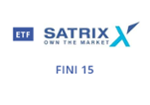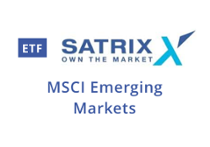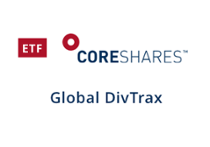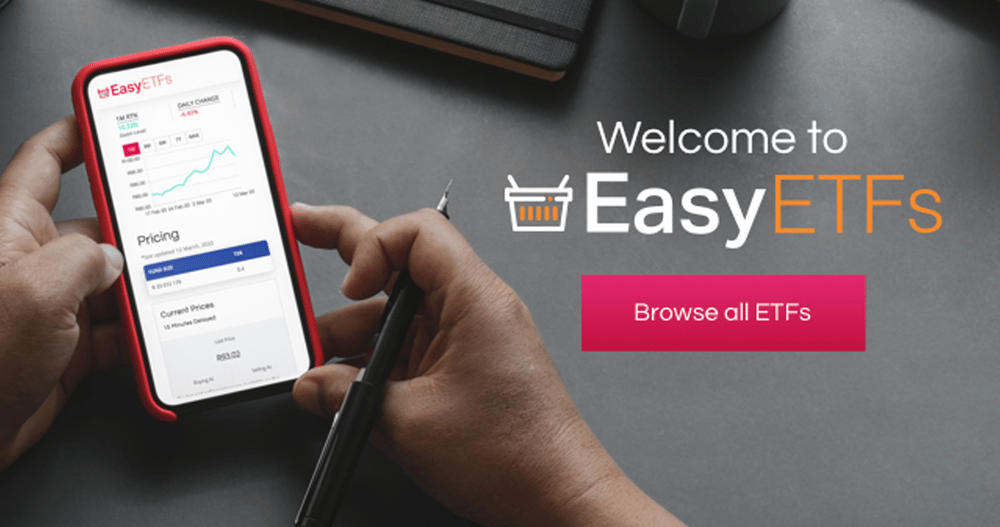Intellidex Reviews August 2020: ETF Picks
International ETFs have been the pick of the litter during the month of August with inflation linked funds being some of the top ETF performers on the local front. Intellidex also lists some solid international and local ETF picks in the note, so don’t miss out! – EasyResearch
Intellidex Reviews August 2020: ETF Picks
Global equity markets moved higher in August as economic activity resumed and the US Federal Reserve signaled continued future stimulus. Although gold seemed to pause briefly, most commodities were positive.
Investor risk remains high with clear signs of a second wave of Covid-19 while the US election brings geopolitical risks. Gold, often a haven for investors during times of crisis (or expectation thereof), declined by 1.0%, possibly due to profit taking as its year-to-date (YTD) performance remains strong at 55.2%.
The MSCI world index, a barometer for the dollar performance of developed market equities, rose 6.5%, while the MSCI emerging & frontier (dollar) index was up 2.1%. Global bonds inched down 0.2%.
The rand strengthened by 0.7% and the local equity market experienced an overall decline. The JSE top 40 index saw a slight decrease of 0.3% and the JSE all share index dipped 0.4%. Performance was driven by a slowdown in the gold mining companies (gold mining index down 5.7%) and financials, which declined 4.3% as financial results reflected the effects of Covid-19 on banks. SA’s weak economic backdrop persists and shows in the continued weakness of the mid and small-cap companies.
The mid-cap index was down 1.7% (-27.2% YTD) and the small-cap index, although up by 1.3% over the month, is down 20.2% YTD.
In this environment, an equally weighted basket of local ETFs was down 0.5%, a basket of all JSE-listed international ETFs was up 3.5% and a basket of commodity ETFs rose 6.2%. Intellidex’s equally weighted portfolio built using these three categories was up 3.1%. This is compared to benchmark performance of 1.7%.
Local ETFs
The local equity market’s performance was driven mainly by gold counters (-5.7%) and financials (-4.3%). Gains came from platinum counters (+5.6%) and industrials (+2.0%). As a result, top-performing local ETFs were inflation-linked funds: Satrix Inflation Linked Bond (+5.3%) and Ashburton Inflation (+4.6%).
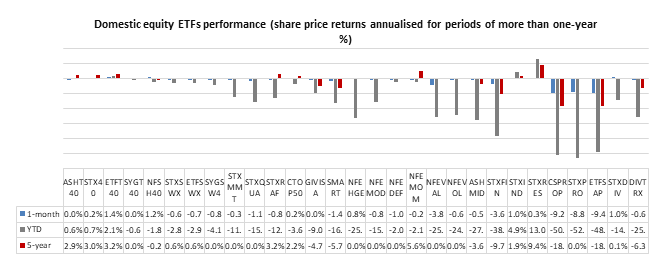
The worst performers were Stanlib SA Property (-9.4%) and CoreShares Property (-9.2%). The top and bottom performers indicate the recent inflation surprise (1.0% increase to 3.2% yearly) on the upside and the continued negative sentiment towards listed property companies in SA.
The NewFunds GOVI ETF and Satrix SA Bonds ETF were up 1.4% and 0.4% respectively. The underperformance of inflation-linked bond ETFs in last month’s newsletter showed inflation expectations were still anchored in a weak consumer demand outlook. This may still be the case as the true inflationary backdrop can only be known once the SA economy is fully operational again.
In commodities, 1nvestRhodium ETF continued its strong performance, soaring 32.6%. It was followed by the 1nvest and NewFunds platinum and palladium ETFs that increased by 2.1% and 8.0% respectively.
International ETFs
Emerging markets saw less “risk-on” sentiment as the economic recovery outside of China is expected to be much slower due to strained economic resources. Consequently, Satrix MSCI China ETF increased 4.6% and Satrix Emerging Markets ETF saw a moderate gain of 2.6%. Cloud Atlas Africa Real Estate plunged 14.5% followed by its ex-SA counterpart that lost 4.3%.
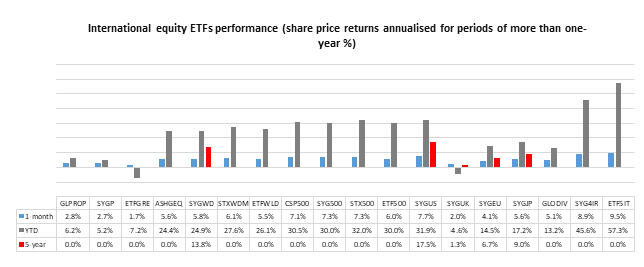
In developed markets, the tech strong Satrix Nasdaq 100 ETF increased 11.2% followed by the 1nvest S&P 500 Info Tech Index Feeder (+9.5%) and Sygnia/Itrix 4th Industrial Revolution (+8.9%) ETF. Zoom’s recent positive earnings update highlights the performance of companies that benefit from people working from home.
Now for their pick of ETFs
Domestic:
Locally, we maintain exposure to anti-volatility strategies as we expect volatility to remain high in coming months. NewFunds Volatility Managed ETFs (JSE-listed) offer investors three options in line with their risk profile: NewFunds Volatility Managed Defensive Equity ETF (-0.1% in July), NewFunds Volatility Managed Moderate Equity ETF (-0.8%); and the NewFunds Volatility Managed High Growth Equity ETF (+0.8%).
These funds aim to manage volatility and drawdowns simultaneously. A targeted volatility is maintained within the fund under all market conditions by reducing equity exposure in times of high volatility while increasing the fund’s cash allocation and vice versa. Unlike most ETFs which have fixed rebalancing periods, these funds apply a target volatility (TV) process daily, so that volatility is always around the target level, ensuring the risk profile is not out of line for extended periods.
The NewFunds Volatility ETFs have a target volatility as follows: NewFunds Volatility Managed Defensive Equity ETF (8%); NewFunds Volatility Managed Moderate Equity ETF (15%); and NewFunds Volatility Managed High Growth Equity ETF (20%).
Finally, we suggest two ETFs to take advantage of possible future optimism in the market. The first is the NewFunds Equity Momentum ETF (-0.2%), which follows a momentum strategy but weights constituents by their contribution to volatility to limit exposure to highly volatile stocks.
The second is the Satrix FINI ETF (-3.6%), which is an option to take advantage of low-priced quality banking counters that may rally in line with our possible scenario outlined below. It provides broad financial sector exposure and tracks the FTSE/JSE Financial 15 Index. It is also reasonably.
The objective of these funds is to maintain a target level of volatility in the fund. Unlike most ETFs which have fixed rebalancing/reconstitution periods, these funds apply a target volatility (TV) process daily, so that volatility is always around the target level, ensuring the risk profile is not excessive for extended periods.
The most conservative of the three funds is the NewFunds Volatility Managed Defensive Equity ETF with a TV of 8%; followed by NewFunds Volatility Managed Moderate Equity ETF with TV of 15%; then the Volatility Managed High Growth Equity ETF with a TV of 20%.
Finally, to take advantage of the optimism in the market, investors can take a punt on NewFunds Equity Momentum ETF (+7.7%), which follows a momentum strategy but weights constituents by their contribution to volatility to limit exposure to highly volatile stocks. This fund can be added as a satellite fund to any of the core funds mentioned above.
International (Developed Markets):
We continue our foreign exposure to the broad-based Satrix MSCI World Equity Feeder ETF (+6.1% in August). A good alternative, though, is the Ashburton Global 1200 Equity ETF (+5.6%), but it has a higher TER. Broad-based exposure is still appropriate due to global central bank stimulus efforts.
Lastly, you can add the following ETFs in line with a view on the global recovery in the US and eurozone in addition to an anticipated Covid-19 vaccine
Furthermore, you can add the Sygnia Itrix Eurostoxx50 ETF (+4.1%), Sygnia Itrix 4th Industrial Revolution (+8.9%) and Satrix Nasdaq 100 (+11.2%) ETFs.
.
International (Developing Markets):
The Satrix MSCI Emerging Markets ETF (+2.6%) remains our only broad-based option. However, the new Satrix China ETF (+4.6%)provides a unique opportunity to increase exposure to a quickly recovering economy. In addition, the element of diversification provides further benefits as discussed below. It is, however, a touch expensive with a targeted TER of 0.63%.
Finally, the highly volatile Cloud Atlas AMI Big50 (-4.3%),%), which focuses on African equities, can be used to a take long-term view on the prospects of Africa.
Click logos to view ETFs
Dividend & Income-themed:
ETFs with a high pay-out ratio in an overall portfolio are important for investors who rely on investment income for daily expenses. We maintain our choice of dividend-focused strategies like the CoreShares S&P Global Dividend Aristocrats (+5.1%) and the CoreShares South Africa Dividend Aristocrats ETF (-0.6%).
We favour the dividend aristocrat strategy applied by these funds in that they select constituents based on actual dividend pay-outs rather than a dividend yield. This is important currently when financially challenged companies may show deceptively high yields because of declining share prices.
The strategy also tends to select companies that can endure difficult market and economic environments and whose earnings are not cyclical. Such funds are usually overweight in highly cash-generative and resilient sectors. The disadvantage of these funds is that they are costly.
The CoreShares S&P Global Dividend Aristocrats has a TER of 0.67% and the CoreShares South Africa Dividend Aristocrats ETF costs 0.55%. An alternative for the local choice is the CoreShares PrefTrax ETF. Although it is pricier with a TER of 0.61%, its yield is large.
Bonds and Cash:
National Treasury released monthly revenue and expenditure figures for July. In the April-July period of the new fiscal year, tax revenue nosedived 21% yearly and expenses increased by 2.1% – evidence of a deplorable and worsening fiscal situation. Consequently, we expect more sovereign credit rating downgrades.
As a result, we hold the the FirstRand US Dollar Custodian Certificate (-1.4%), which invests in US treasury bonds and offers rand hedge qualities. However, the actions of global central banks have led to expensive international bonds with limited potential for upside. Investors with access to broad emerging market bond ETFs should continue considering them from a tactical perspective.
The only other option on the JSE is NewFunds S&P Namibia Bonds (+1.1%). As “risk-on” sentiment improves, emerging market bonds are likely to rally as investors start searching for better yields. For short-term investors, usually less than a year, we maintain the NewFunds TRACI (+0.4%) as our choice.
Diversified funds:
Two ETFs perform asset allocation and diversification for investors who prefer to have it done for them. Equities and bonds are combined to produce a diversified portfolio for two investor types with differing risk appetites: Mapps Protect ETF (+1.2%) is more conservative, usually suitable for older savers. Mapps Growth ETF (0.0%) suits investors with a longer-term horizon.
Notably, both funds invest in SA-listed assets, thus lack an offshore flavor.
Commodity funds:
Adding a commodity ETF to your portfolio improves diversification because commodities are not strongly correlated with broader markets – they don’t move in line with them. Rhodium has been our metal of choice since the start of last year and it shot the lights out for our portfolio. However, we think it may have reached a peak. We hold true to our speculative replacement with platinum.
In the short term, the platinum market is expected to remain tight. Demand may have been affected by the temporary closure of automotive factories across the world and ongoing erosion of platinum jewellery consumption. However, medium- to long-term prospects for platinum are enticing. With the palladium price now significantly higher than platinum, automakers may increasingly try to substitute some of the palladium used in diesel and petrol catalytic convertors with platinum. Should that happen, platinum is expected to move higher.
The 1nvest Platinum ETF (+2.1%) which is the cheapest of the two platinum funds on the JSE, is our preferred vehicle for investors seeking exposure to platinum. The fund invests in physical platinum, which is stored in secured custodian vaults.
Intellidex Reviews
July 2020: ETF picks
Background: Exchange-traded funds (ETFs)
Exchange-traded funds (ETFs) are passively managed investment funds that track the performance of a basket of pre-determined assets. They are traded the same way as shares and the main difference is that whereas one share gives exposure to one company, an ETF gives exposure to numerous companies in a single transaction. ETFs can be traded through your broker in the same way as shares, say, on the EasyEquities platform. In addition, they qualify for the tax-free savings account, where both capital and income gains accumulate tax free.
Benefits of ETFs
- Gain instant exposure to various underlying shares or bonds in one transaction
- They diversify risk because a single ETF holds various shares
- They are cost-effective
- They are liquid – it is usually easy to find a buyer or seller and they trade just like shares
- High transparency through daily published index constituents
If you thought this blog was interesting, you should also read:
Disclaimer
This research report was issued by Intellidex (Pty) Ltd. Intellidex aims to deliver impartial and objective assessments of securities, companies or other subjects. This document is issued for information purposes only and is not an offer to purchase or sell investments or related financial instruments. Individuals should undertake their own analysis and/or seek professional advice based on their specific needs before purchasing or selling investments. The information contained in this report is based on sources that Intellidex believes to be reliable, but Intellidex makes no representations or warranties regarding the completeness, accuracy or reliability of any information, facts, estimates, forecasts or opinions contained in this document. The information, opinions, estimates, assumptions, target prices and forecasts could change at any time without prior notice. Intellidex is under no obligation to inform any recipient of this document of any such changes. Intellidex, its directors, officers, staff, agents or associates shall have no liability for any loss or damage of any nature arising from the use of this document.
Remuneration
The opinions or recommendations contained in this report represent the true views of the analyst(s) responsible for preparing the report. The analyst’s remuneration is not affected by the opinions or recommendations contained in this report, although his/her remuneration may be affected by the overall quality of their research, feedback from clients and the financial performance of Intellidex (Pty) Ltd.
Intellidex staff may hold positions in financial instruments or derivatives thereof which are discussed in this document. Trades by staff are subject to Intellidex’s code of conduct which can be obtained by emailing mail@intellidex.coza.
Intellidex may also have, or be seeking to have, a consulting or other professional relationship with the companies mentioned in this report.
Subscribe To Our Research Portal
Search all research
Let Us Help You, Help Yourself
From how-to’s to whos-whos you’ll find a bunch of interesting and helpful stuff in our collection of videos. Our knowledge base is jam packed with answers to all the questions you can think of.


